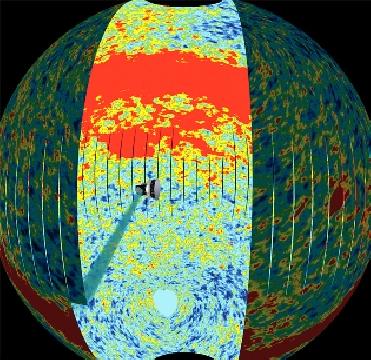The Unmanned Aerial Vehicles (UAVs) is an integral part of today's modern armed forces and considered as the next generation Airborne Reconnaissance. US and Israel are the most prominent users of UAV technology, their companies are successful in manufacturing them and exporting it to other countries.
UAVs are said as a predecessor of ‘aerial torpedoes’ built during World War-1. The UAV is an aircraft which are remotely piloted, they are mostly assigned for the Dull, Dirty and Dangerous missions. They consist of high resolution video, digital imagery and sensors. They cover large area through way point tracking which is programmed for linear or areal scans.
UAVs test ranges are align for communications, tracking, telemetry, fixed or mobile data transmission and mission control centers.
UAVs are basically classified in three levels:
• The most basic control is by pre-programmed flight.
• Remote-control is the most common control system for UAV.
• Self-thinking UAVs is a futuristic plan of different countries.
The UAVs are mainly used for reconnaissance as it is unmanned, available in low cost and low visibility. Most countries can easily afford them, while the loss of one does not cost much and leaves no pilot to be rescued.
Five categories of current UAV are Micro, Mini, Tactical, Medium altitude and High altitude. Medium and High altitude are also known as, MALE (medium altitude, long endurance) up to 30,000 ft (9,000 m) and range over 200 km and HALE (high altitude, long endurance) over 30,000 ft and indefinite range as they have the ability to stay aloft for long period of times.
Development and acquisition of high-end Medium-Altitude Long Endurance (MALE) and High-Altitude Long Endurance (HALE) systems demands major investments.
The UAV market is highly competitive as three US companies’ (General Atomics, AAI and Northrop Grumman) holds extremely strong position in the UAV market and it is in competition with three Israeli companies (IAI, Elbit and Aerostar).
An organisation Missile Technology Control Regime (MTCR) was created by some countries to curb the spread of unmanned delivery systems for nuclear weapons, specifically delivery systems that could carry a minimum payload of 500 kg a minimum of 300 km. MTCR was established in April 1987 by Canada, France, Germany, Italy, Japan, Great Britain, and United States, currently there are 34 members in this group.
Indian UAVs
India has developed a major market for UAV since the mid-1990s. Israel UAV ‘Heron’ is in service with the Indian armed forces. The Indian Defence Research & Development Organisation (DRDO) branch ADE (Aeronautical Development Establishment) has developed ‘Nishant’ UAV for its armed forces. The Indian UAV Nishant has completed its development phase and user trials.
DRDO is also developing another UAV Rustom, a Medium Altitude Long Endurance Unmanned Aerial Vehicle for its armed forces. The basic design of UAV 'Rustom' is derived from the NAL light canard research aircraft (LCRA).
The main components of UAV system
Airborne part – aircraft
• Airframe – wings and body.
• Engine – most UAVs are powered by a piston (reciprocating) engine driving a propeller. Faster and higher flying UAV use turboprop or jet engines. Electric, battery or fuel-cell powered, engines are becoming usual on micro- and mini-UAVs.
• Sensors – radar, photo or video camera, IR scanners or ELINT are most common. Sensors may include a (laser) target designator to provide guidance for stand-off guided missiles and shells.
• Control system – used to fly the UAV. Either a two-way data link (radio) for remote control or an onboard computer (generally with GPS navigation) connected to the aircraft control system.
• Data link – One-way (radio) link transmitting data collected by sensors.
• Recovery system – optional; most modern UAVs land like normal aircraft; earlier UAVs often use a parachute to land.
Ground-based part
• Launcher – many UAVs are launched by a catapult-type launcher or with a rocket booster. UAVs with a wheeled undercarriage for take off like a normal aircraft, which is less stressing on the UAVs airframe, is becoming more common.
• Control system – used to fly the UAV; this includes a ‘cockpit’ from which the ‘pilot’ on the ground flies the UAVs (if remote-controlled). It is linked by two-way (radio) link to the UAV. The control system may include sub-control systems allowing other operators to take over flight.
• Data link – receiver for sensor data transmitted from the UAV. There may be several receivers of data, including some not part of the UAV system.
• Transport and maintenance – UAV systems are generally mobile.
-Courtesy:
Federation of American Scientist Website
UAVs: Niche for Dull, Dirty and Dangerous Missions
Other Related News
Indian Army marks 4 decades of presence in Siachen glacier
The induction of heavy-lift helicopters and logistic drones, deployment of all-terrain vehicles and laying of an extensive network of tracks are among a host of measures that have enhanced India's combat prowess in Siachen, the world's highest battlefield.
 Previous Article
Previous Article Next Article
Next Article













The Indian Air Force, in its flight trials evaluation report submitted before the Defence Ministry l..
view articleAn insight into the Medium Multi-Role Combat Aircraft competition...
view articleSky enthusiasts can now spot the International Space Station (ISS) commanded by Indian-American astr..
view article